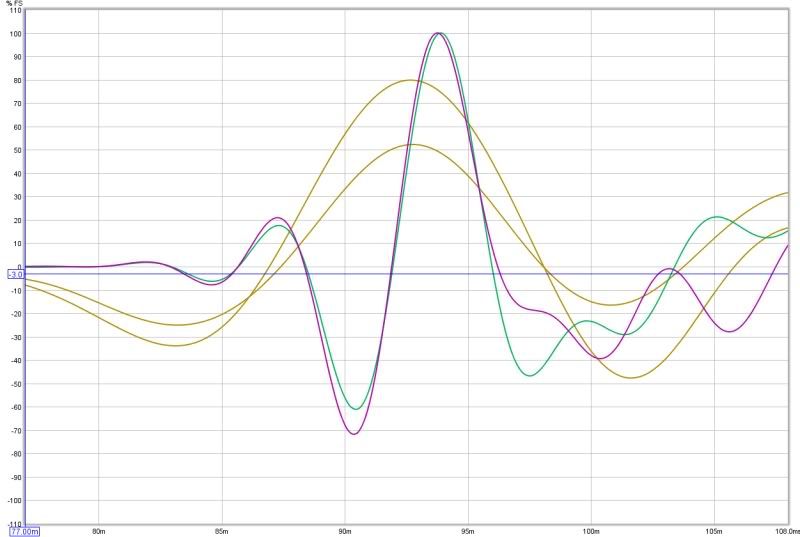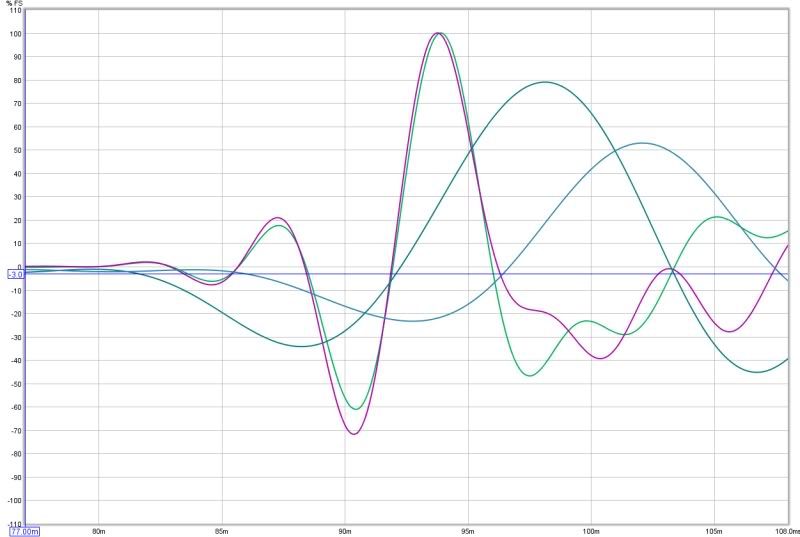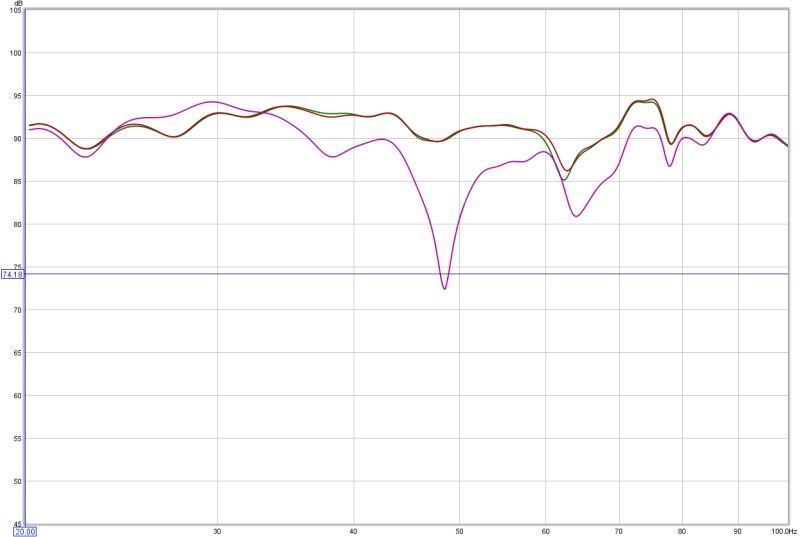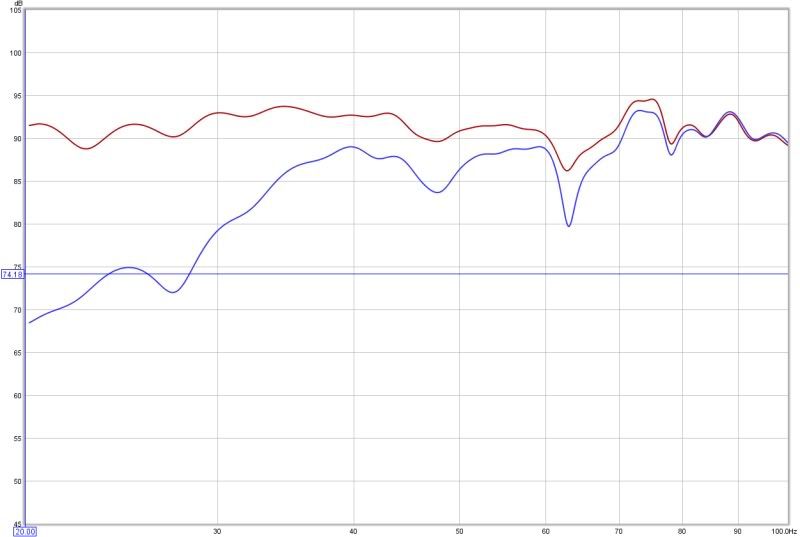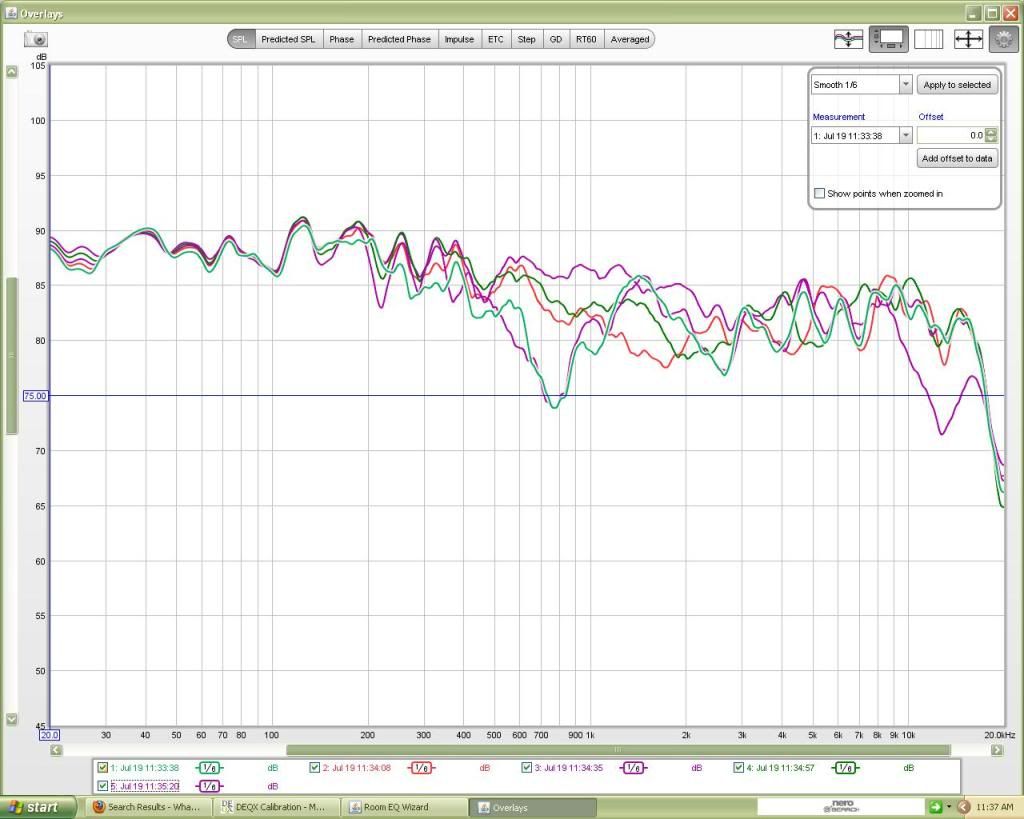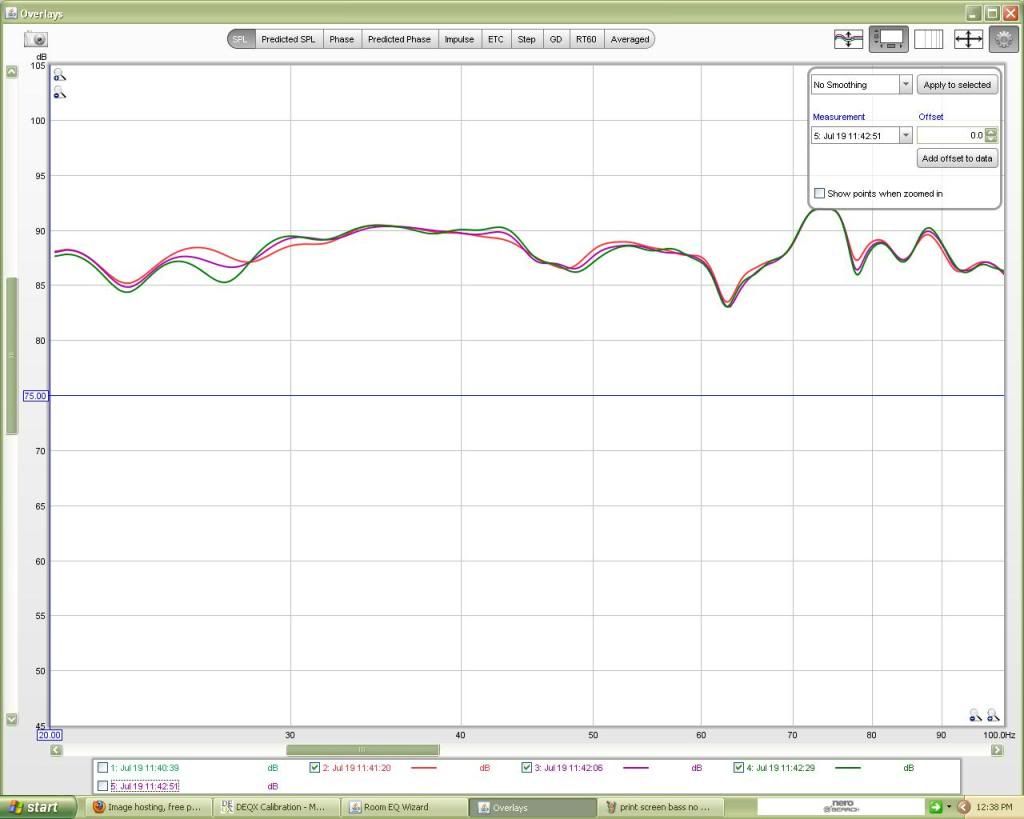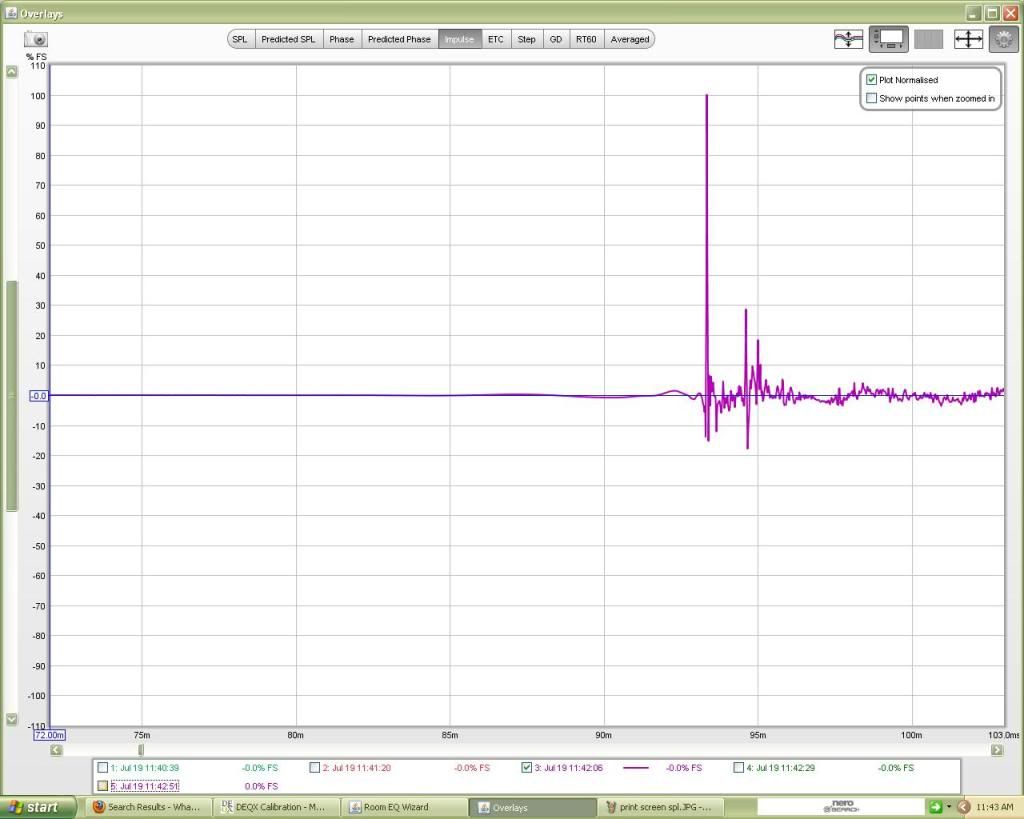Some of this will touch on marks comments etc.
Thanks DS, looks like we are closer than first appeared? Haha, you should know me by now, at times I am wont to wax philosophical! And here is another one

Can I make the observation that when a discussion is carried out in a non combative manner, it invariably moves along and is productive? None of which demands anyone capitulate their position BTW, so it is not a matter of being 'less manly'...that may be cryptic to some, if so then trust me, don't worry about it. Those that can guess where I am pointing would surely agree with me.
OK, then we were talking past each other, probably because I was too brief - me too
brief, really?

- in my comments. To elaborate on my phrase "set up sequentially" under the first prong, it means "adjust the levels, sub highpass, and delay/phase for smoothest natural response, starting with the first (usually corner) sub and mains, and then repeat the process with each additional sub."
"Time alignment" in and of itself is, as you've shown in your measurements, visible in the frequency response down low.
Yeah, we
can see that, and twas the sole point I was trying to get across, that (as you observe soon) we can get 'free' gain and a smoother plot to work with if we address this issue before eq.
I think it's the other way around. Placement first, then everything else.
That does assume some flexibility in placement, which is often (usually?) an unwarranted assumption. In practice, usually subs go where they'll fit without being an eyesore in the room.
I take it you mean 'in the corner (for example) to maximise output' type stuff? Yeah, I can certainly see that. That it also kinda ensures that the sub and mains will NOT be in time and because of that is another reason to take a quick look at the time. I was only looking at the guy who has no other way to affect the time, he can ONLY do it by placement. In any case, we agree here I think.
Your FR did change with changes in delay, though, so I'm confused as to why one would look at both, rather than just the one.
Let me ask you a question that I think will clarify where I'm coming from.
Assume for a minute you were only taking FR measurements. Which one looks best? While it's subtle, the one with equal arrival times is the smoothest, no?
I think we're converging on similar results, but going at it from different directions. I prefer my direction, because it requires looking at only one thing and not two.

This is an interesting one, I'd like to spend a little bit of time on it if that is ok. If I have grabbed the wrong end of the stick then let me know yeah?
I see we essentially agree...that the 'best' response also coincides with the 'best' timing. But, as you never look at timing, here is how I picture the process going (and is where you might need to correct me)
If you only look at the FR...firstly HOW do you know it is not (magically) the 'best' FR? In other words, it is only by moving the subs, taking another sweep and comparing that you can start to tell you are converging on the 'best' timing?
Which way do you move them, left or right, front or back, a combination? Each time taking a sweep. (the starting point is that you have to get the best graph FR wise which coincides with the 'best' time)
Start to ad up those permutations and I fail to grasp how it is any easier...'because it requires looking at one thing not two'.
Anyway, it is possible that you don't quite know this? You might have to look at two graphs, BUT it is the one and the same measurement...once you have that measurement you simply switch back and forth to see it represented how you wish...phase, spl, impulse etc. They are just different presentations of the same data.
Again, a quick pic will show it faster than words.
It also addresses another point while we are at it
Also, your measurements are all single-point, correct? Move the mic a foot in any direction, and what happens?
Yeah, when I check the time I put the mic where (I think) the centre of my head is, so it represents the equidistant point from the speakers. Yes, single mic.
BTW, when I adjust the mains timing, I just set it up and don't worry about it after that on later measurements...as the mic WILL be in a different place, there is a time limit you reach after which you don't bother chasing anymore, that limit being what we reasonably expect mic variations to be.
The short answer to your question is 'no, in the range we are discussing here (bass), differences in position do not make much difference'. Of course, the higher frequencies will vary wildly with changing position, as I think will be clear.
(pretty sure you know all this stuff?? In any case, it is good to write it for a few reasons, others might not
AND most importantly, it allows me to be corrected if I am wrong)
Again, took two minutes. I put the mic in five different places across the listening position, about six inch increments (ie, one foot to the left of the centre point, six inches to the left, centre point etc etc). I do this anyway as a matter of course. I mentioned above how I like the in room curve to be, I get the base position from this very method, and in the average tab you will see (hopefully it will be clear!) I average these positions across the LP and apply any full range eq to the
average. Often there will be 'common' peaks and dips that appear across each graph, they are the obvious first points to address.
Anyway, here is a print screen (so it will show the full picture, not just the graphs) of those five measurements
First thing, we can see that tho anything above 200 (say) varies wildly, the bass is essentially the same. I have not bothered to show this, but if you remove the outer two measurements, one each side, then they agree very nicely. That is still at least a foot spread.
Just for the heck, here is the bass with no smoothing, the outer two removed (ie a foot spread) and with the same scale as the earlier graphs
BUT, I want to draw your attention to the tab at the top, labelled SPL naturally. Roughly in the middle is another tab called Impulse, click in that and this data will be presented as an impulse plot.
No extra measurements or work required, it is all there. The same applies of course if in the SPL plot we had, instead of full range measurements as this one is, seperate measurements of subs, mains, tweeters etc etc (that was how I did the earlier ones, you can see the seperate impulses from each, if I had shown the SPL tab of those graphs you would have seen the seperate SPL traces of each driver)
So, given that we seem to agree that we should converge on the 'best' timing to give us the 'best' FR, I think my method is way faster and more accurate.
Note again, this is just for everyone's 'information', I don't demand nor care if they agree or disagree, do it or not do it. Just data.
Which ones? There were, AFAIK, three separate runs of Maelstrom-X's. I only have experience with the very first ones, which had dual 8? coils and the lowest normalized inductance of the series by quite a bit (0.87mH Lep/ 3.1? Rep). I know that the Mk. I is clean out to past 200Hz, but the later ones as I mentioned did have higher inductance so I don't know if they are as good.
Dunno actually, both bought second hand. I know the first one was dual four ohm coils, I assumed the second one was too! Haha, never even checked and wired it up the same way as the first. Oh well, I just make it do what I want. When I rebuild them, I might check out of curiosity's sake.
All sealed.
No idea. I don't know the math. I just know from experience setting up subwoofer systems that when I see a single notch in that general region that's consistent across multiple positions, I think floor-ceiling mode. And in practice I've always been able to eliminate or at least significantly reduce it with a high-mounted subwoofer.
Had a quick look at a calculator, don't think that particular one corresponds with ceiling height (seventeen feet btw)..what DID seem to come up that caught my eye was one around 110 or so, I see THAT one all the time! My width/depth depending on how you look at it is very close to the ceiling height, the last dimension is around 9m if memory serves (with a
very big bay window to make it even more complicated!)
Thanks ever so much mark. Oh, that reminds me, you will see above in the impulse how sharp it is (certainly compared to the earlier ones!)..as mark pointed out the crispness of the impulse depends on the signal it was fed. I always thought it had to do with bandwidth, mark has said it is the high frequencies. Still learning.
Another point mark raised was 'where do you align it'. VERY true indeed. As we have seen it is not a crisp clean impulse. I usually use the peak of the first major 'rise', if that made sense.
why? dunno. Well, if you take a close mic reading of the sub there usually IS a very pronounced unmistakeable peak...look at the in room response and it might not be so clear! SoI just refer back to my 'knowledge' of how the raw sub produced the impulse (close mic) and apply that to the often scrambled in comparison in room response.
I agree with mark, you need to be aware of which way you are adjusting the time (if that is what you want to do)! Much quicker and easier to LOOK and see, rather than an iterative process.
Mark, is there a better 'signal' we can use to do this? Would you be able to tell us (if not a trade secret) how you go about it? Any variations on this outline, any complete stupid stuff I have said that needs correcting?
This is all about learning, not winning so to speak.
thanks.


